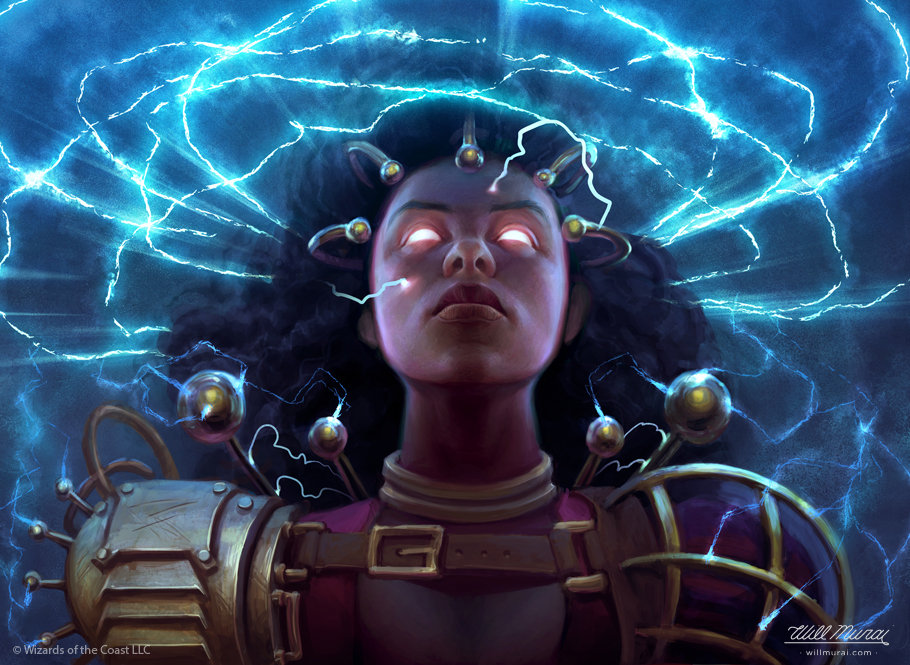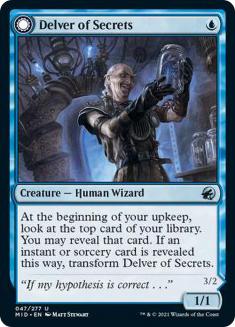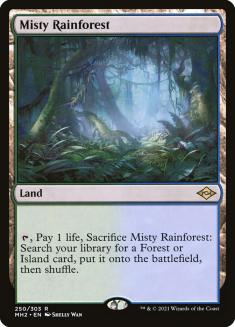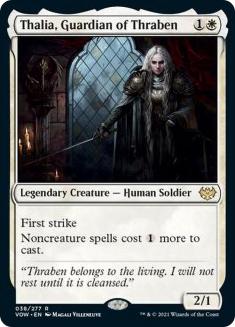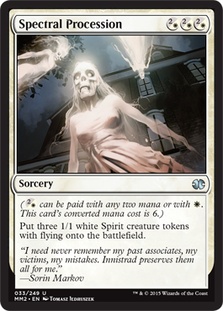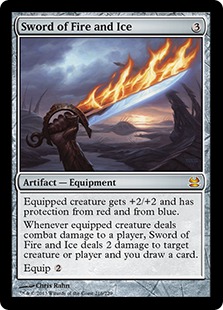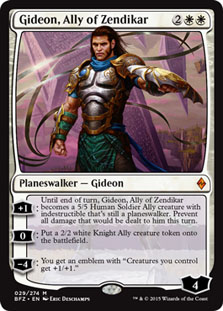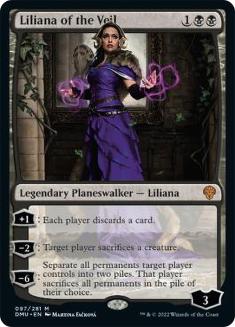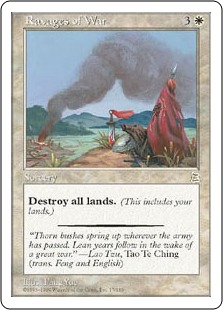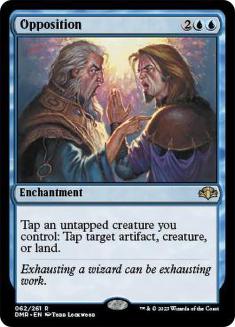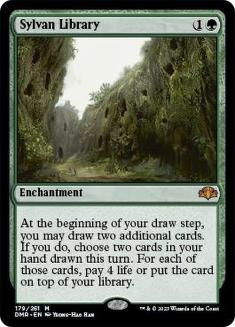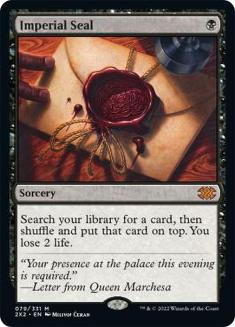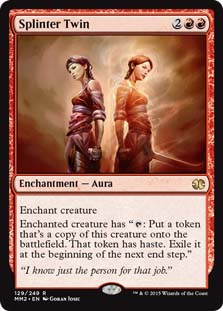When I work on my own Cubes, I like to keep the power band narrow and to emphasize the importance of drafting cohesive decks rather than individually powerful cards. Vintage Cube offers the exact opposite incentives, and individually powerful cards can do a lot of work to prop up weaker decks. Under this paradigm, it becomes incredibly important to have a strong understanding of the relative power levels of every card in the Cube.
This week and next week, I’m going to shine some light on where I think a lot of players consistently get their pick orders wrong with regard to Vintage Cube. I will do this by identifying my picks for the Top 10 most over- and underrated cards in the Magic Online (MTGO) Vintage Cube. I don’t have any scientific methodology to this, this is just based off of my experiences both in drafts and in games with regard to which cards go later in drafts than I think they should and which cards I play against regularly that seem to be hurting my opponents more than they help them.
Today I’ll be revealing the overrated list. None of these cards consistently make my decks, all of them receive high praise on social media, and I’m not generally concerned when my opponents cast any of them. Looking over my list, it’s plain to see that all of these cards have high ceilings, and today’s discussion is going to revolve largely around their floors. Higher cards on the list simply have low value over replacement, and as we get further down the list, we’ll get to cards that are often actively bad to draw. Let’s get to it.
10. Brainstorm
Brainstorm has the highest floor of the cards on today’s list, and it’s really difficult to convince anybody that Brainstorm is “bad.” It’s not, but on average in Vintage Cube, it’s also not good.
A lot has been written on how to leverage Brainstorm effectively, specifically in Legacy Constructed, and I don’t want to waste anybody’s time trying to rehash that conversation. It’s very crunchy and seems to generally fall on deaf ears. The relevant and digestible points are that Brainstorm is truly effective when you’re able to reset the top of your library, and this is best accomplished by decks that are able to shuffle away more excess lands. This is why Delver of Secrets decks in Legacy tend to be the best Brainstorm decks, because they generally need fewer lands than other archetypes to operate.
Both of the points about optimizing Brainstorm are difficult in Cube. Resetting your library can be difficult because other players tend to value the easiest way to do this, fetchlands, very highly. It is possible to draft a Cube deck that is great at leveraging Brainstorm in this way, but it’s uncommon. More so if you’re drafting Brainstorm itself highly. Once you cross that hurdle, there’s still the fact that great Cube decks tend to want to be able to generate quite a lot of mana, which leaves them with less that’s desirable to shuffle away when you can reset your Brainstorm.
At the end of the day, Brainstorm is just cycling a lot of the time, which is fine and comes at the price of only one mana. This is a serious indictment of the card for me in a format as powerful as Vintage Cube, though, because we can do a lot better than cycling and we don’t always have mana to spare. I consider Ponder and Preordain to be first-pickable given that they are great forms of card selection without any outside considerations, whereas Brainstorm is kind of dumpy on its own, and as such it doesn’t even always make my deck when I wheel it. There’s generally nothing wrong with playing Brainstorm when you get it, but it realistically should wheel more often than it does, given how few Cube decks consistently leverage it in a powerful way.
9. Thalia, Guardian of Thraben
Similarly to Brainstorm, Thalia, Guardian of Thraben is a sacred cow in the Legacy format. The card’s relative weakness in Cube has more to do with the opposition, though. A 2/1 first striker is whatever, and a rate that you’ll play because you want to deploy threats early and often in aggressive decks. It just happens that Thalia’s strength in Constructed often feels more like a drawback in Cube.
Thalia was definitely better a few years back, but creatures are just good now. This means that taxing noncreature spells doesn’t necessarily impact the best cards in your opponent’s hand. To the extent that taxing your opponent’s things does matter, very few Cube decks really struggle against Thalia the way that a wider range of Legacy Constructed decks do. Sure, you’ll play against the occasional Storm opponent where Thalia’s value over replacement jumps through the roof, but against the average opponent, Thalia draws a close comparison to Youthful Knight.
The real issue is that this Youthful Knight comes with a drawback. There are quite a few powerful cards for the white aggressive decks in Vintage Cube that you’ll always want to play but that you’ll often struggle to pay the Thalia tax for.
I almost always want some number of three- and four-mana-value noncreatures in my Mono-White Aggro decks, and I tend to suffer the Thalia tax at least as much as my average opponent. I win a lot with these decks, and part of my plan is that I always play Gideon and only occasionally play Thalia. Tithe Taker was more appealing when it was in the Cube because it taxed most of the things that you cared about while also replacing itself. Adanto Vanguard is still around, though, and that’s another one I’m much happier having than Thalia.
8. Liliana of the Veil
If you’ve never attacked your opponent instead of their Liliana of the Veil when the Liliana was on one loyalty, then you either haven’t played against the card much or have made some misplays around it. Liliana of the Veil is largely a glorified Cruel Edict, and is the highlight of exactly zero decks in Vintage Cube.
Albeit for different reasons from Thalia, Liliana also suffers from the fact that creatures are just good now. One Edict effect just doesn’t do as much as it used to. Liliana is still a decent discard outlet, but like our friend Brainstorm, we really aught to aim higher than decent.
Back to my point about playing against Liliana, if you have any expendable cards in your hand and your opponent is definitely going to be discarding to their Liliana’s plus, then it will often make sense just to leave their Liliana be. This is especially true when Liliana on two is no more difficult to answer than the Liliana on one. Start showing less respect to your opponent’s Lilianas, and you might be surprised to find how often they don’t event bother to activate it after they get that initial Edict off.
7. Primeval Titan
I’ll start this with the caveat that Primeval Titan’s stock increased when Dark Depths combo was added to the Cube. That said, I still play against the card when my opponent is using it to find junk like Raging Ravine or even basic lands. If your deck is just trying to get more mana once you already have six, then I’d recommend trying to correct this problem rather than adding expensive ramp spells.
I can’t say that Primeval Titan is the worst six-drop in the Cube with Olivia, Crimson Bride and Sun Titan hiding in the spread, but I can say that it should wheel far more often than it does. I’ll play Primeval Titan in my green decks when I have Craterhoof Behemoth and stuff like Finale of Devastation that I intend to dump a lot of mana into, but it’s a much lower priority than any earlier point on the mana curve.
If the Dark Depths combo were removed from the Cube, I’d go back to my position that Primeval Titan’s presence in the list is largely irrelevant.
6. Armageddon / Ravages of War
A lot of players consider Armageddon first-pickable. I personally don’t even maindeck the card when I do draft it. I see it as more of a Hail Mary for matchups that are categorically difficult for Mono-White Aggro.
The rub with these cards is that they’re basically only good when you’re ahead on the battlefield. I think everybody knows this, but the implications of that seem to be glossed over as these cards continue to be drafted highly. Mono-White Aggro has plenty of great tools to keep pace with most of the decks that the Cube can generate, so the games when you’re able to get ahead early are pretty winnable anyway on average. So you factor that with the games that you draw Armageddon when you’re behind, and where does that leave you? The card can be a 10, but it can also be a 0. Where I’m from, we call that a 5.
Also, there are just two copies of this effect in the Cube. If you really want it, you’ll get a crack at it more often than most anything else in the Cube. I’ve found that sticking to cards that just get the opponent dead, like Hero of Bladehold, and removal like Swords to Plowshares and Solitude to disrupt the opponent is more than good enough against most foes.
5. Opposition
I’m probably biased because I’ve had Opposition and Deranged Hermit in numerous decks over the years without ever successfully controlling both. I imagine that I would like Opposition a lot more if it wasn’t a blue card. Blue decks just don’t need to get fancy with their win conditions, and with such a long list of generically powerful cards to choose from, I am not at all excited about tracking down blue dual lands to support an Opposition deck.
There are lots of similarities to Armageddon here, in that Opposition is either outright winning the game or not doing much of anything. A 10 and a 0. A 5. Except that Opposition is also more of a specific combo card, which increases the difficulty in leveraging it. Opposition is a very popular Cube card, but at least in Vintage Cube, I’m going to stick to one-card combos in blue like Upheaval and Jace, the Mind Sculptor.
4. Sylvan Library
I’ve never really understood Sylvan Library. And I’m not talking about the card’s complicated rules text; I mean that it just seems weak in more matchups than it’s strong in. Until you pay four life, you’re down a card, and the card selection is only slow and fine. Personally, if I draft Sylvan Library at all, it starts in my siddeboard and I only bring it in if I expect to want to pay eight or more life in a given matchup.
My playgroup strongly disagrees with me on this one, but if I’m critical of spending one mana on Brainstorm, you had best believe that I’m more critical of spending two on Sylvan Library. I often see this heralded as one of the more powerful green cards in the Cube, while I consider it one of the most expendable.
3. Imperial Seal
Imperial Seal lands in a weird spot, because it’s difficult to explain that Vampiric Tutor is very powerful, while Imperial Seal is generally pretty weak. The difference between casting Vampiric Tutor on your opponent’s turn with the full context of how they spent that turn, versus casting Imperial Seal on your own turn and giving your opponent a full turn knowing that you’re up to something, is massive.
Imperial Seal should basically only go in decks that are trying to win the turn that they cast it with some kind of redraw, and it’s not uncommon for me to see it out of Golgari/X Midrange pile. These midrange decks can be successful, but they should be trying to generate value, and neither drafting Imperial Seal highly nor playing it at all. No, Hymn to Tourach is not a remotely good enough card to tutor for with Imperial Seal.
2. Splinter Twin
The red Opposition! The problem with Splinter Twin is that Izzet decks are great in Vintage Cube, and win conditions are largely an incidental matter for them. Red offers a lot of spot removal to keep the aggro decks at bay, and blue permission spells give you the ability to tango with control and combo decks alike. It really doesn’t matter how you actually end the game because you have so much power when it comes to disrupting your opponent. Really, the last thing that you want to do is open yourself up to getting two-for-one’d by Dismember.
I think that a lot of Splinter Twin’s popularity has to do with the fact that the card is banned in Modern and not really playable anywhere else. If you’re picking it highly because you like it, that’s fine. The customer is always right in matters of taste. Splinter Twin simply isn’t a very important element of successful Izzet decks in Vintage Cube.
1. Fastbond
Every season of Vintage Cube, I play the same game against Fastbond at least once. My opponent keeps, casts a Turn 1 Fastbond, plays an extra land on that turn, and then proceeds to do nothing for the rest of the game. The floor of Fastbond is that the card is a mulligan, and you don’t want to have blank cardboard in your deck if you can avoid it.
The ceiling of Fastbond is incredibly high! There are multiple combos with cards like Courser of Kruphix to keep playing lands off the top of your deck or just using draw-sevens like Wheel of Fortune to make a ton of mana and cast a bunch of spells. These things are great to do! The point that I’m getting at is that the average Vintage Cube eight-person draft table in a 540-card Vintage Cube generates less than one good Fastbond deck.
So why does the card always get picked early? It’s a good speculative card because the good Fastbond decks are quite good, but if your deck is going to play an extra land or two and do nothing with any regularity, you need to ditch the Fastbond. You likely want more than one way to combo with the card and/or a good amount of card selection to facilitate your combos. Decks that play with Fastbond but fail to do this just don’t function in a lot of games. There is no card in Vintage Cube that correlates my strongly with my opponent losing than them casting Fastbond.
Cool Takes
Today’s article was not intended to be incendiary, but by its nature I’m sure this list ruffled some feathers with its “hot takes.” We discussed some or all of this on The 540 at some point, so to me, these takes have had plenty of time to cool down. I firmly believe that the average player would see an increase in the quality of the decks that they draft if they started valuing these cards lower.
Next week, I’ll be revealing my list of the most underrated cards in the Cube, which will be a nice supplemental piece to this end. Until then!

